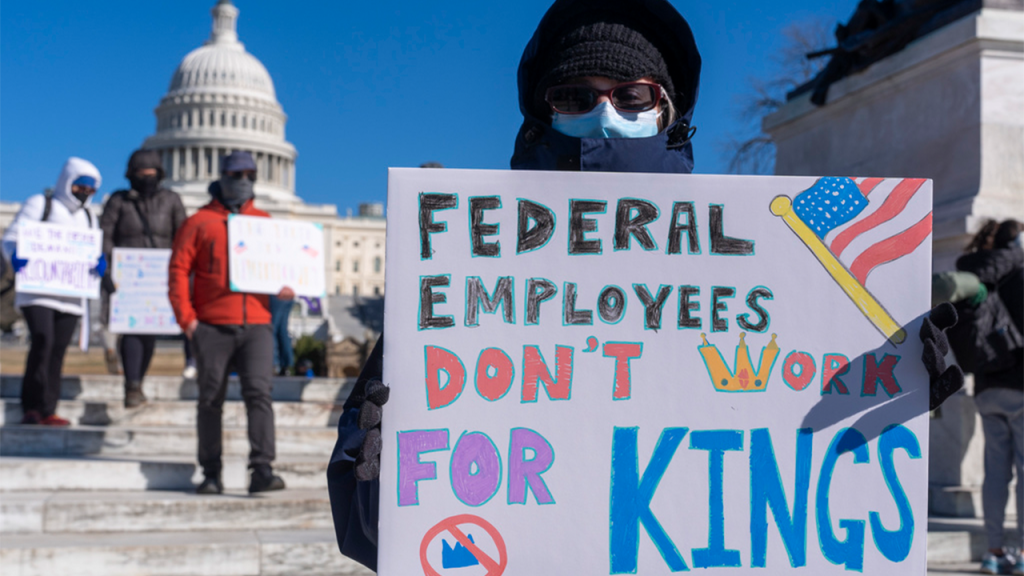In a significant legal development, two U.S. District judges have issued rulings compelling the Trump administration to reinstate probationary federal workers who were let go during mass firings. The first ruling came from Judge William Alsup, who mandated immediate reinstatement for employees across various departments, and was subsequently followed by Judge James Bredar’s assessment that the firings violated existing labor laws. The judges sided with states alleging that the mass layoffs have disproportionately impacted local economies and government functions.
| Article Subheadings |
|---|
| 1) Background of the Mass Firings |
| 2) Legal Proceedings and Rulings |
| 3) Impact on State Economies |
| 4) Administration’s Defense |
| 5) Future Implications for Federal Employment |
Background of the Mass Firings
The mass firings of probationary federal employees have emerged as a contentious issue amid broader discussions about federal workforce reduction under the Trump administration. Approximately 200,000 probationary workers across various federal agencies faced termination, with significant layoffs occurring on or about February 13 and 14 of this year. These individuals, often new employees or those recently promoted, lack the full civil service protections that seasoned federal workers enjoy, making them more vulnerable to abrupt employment changes. As a result, many experts have highlighted the precarious situation for those impacted by these layoffs.
Legal Proceedings and Rulings
The recent legal developments began with U.S. District Judge William Alsup’s intervention, which specifically addressed terminations at six federal departments, including Veterans Affairs, Agriculture, Defense, Energy, the Interior, and the Treasury. Judge Alsup ruled that the layoffs were not carried out in accordance with federal regulations that govern large-scale layoffs. He ordered these agencies to reinstate affected workers immediately and mandated reporting on compliance within seven days. Subsequently, Judge James Bredar ruled that the overall approach to the mass firings neglected statutory protections and showcased a disregard for established labor laws.
The rulings were met with a coalition of state attorneys general who spearheaded the lawsuit against the federal government. Their contention was that the mass firings not only violated the rights of the workers but also placed an undue burden on state economies. This legal push was crucial given the broader context of federal downsizing efforts, making the judges’ rulings particularly significant in the ongoing legal battles.
Impact on State Economies
The mass unemployment resulting from the firings poses a substantial risk to state economies, particularly in regions heavily reliant on federal employment. Many state governors and officials have voiced concerns over the ripple effects of the layoffs, which could exacerbate economic problems, drive up unemployment rates, and strain local government resources meant to provide assistance to those suddenly jobless. As states grapple with the loss of labor within their borders, local economies must manage the fallout while simultaneously attempting to support the laid-off workers. The situation complicates fiscal planning and could lead to increased reliance on state social service programs.
Administration’s Defense
In light of the legal judgments against the administration’s practices, officials have mounted a defense arguing that the layoffs targeted employees for performance-related issues and did not fall under the classification of large-scale layoffs. The administration maintains that each agency conducted assessments to determine the suitability of probationary employees for continued employment. Additionally, government attorneys highlighted that states do not possess the right to dictate the federal government’s workforce decisions. Nonetheless, the court’s decisions challenge this narrative, emphasizing the necessity of adhering to federal laws governing the treatment of public employees.
Future Implications for Federal Employment
The outcomes of these legal proceedings could have far-reaching implications for federal employment practices moving forward. With ongoing litigation, the stability of employment for probationary workers is in question, especially as numerous lawsuits against the administration’s mass layoffs continue to emerge. Additionally, the growing scrutiny of federal employment policies may prompt legislative discussions concerning the structure and protection of the federal workforce. As the judicial oversight becomes more pronounced, it may lead to enhanced protections for workers, particularly those in probationary status.
| No. | Key Points |
|---|---|
| 1 | The Trump administration’s mass firings of probationary workers faced legal challenges from state governments. |
| 2 | Judges ruled that mass layoffs were illegal due to violations of federal labor laws. |
| 3 | Affected workers are primarily new hires lacking civil service protections. |
| 4 | The impact of firings risks increased unemployment and economic strain on state governments. |
| 5 | The administration argues firings were justified based on performance assessments, not large-scale layoffs. |
Summary
The recent court rulings highlighting the illegality of mass firings of probationary workers signify a pivotal moment in federal employment law. As states rally against the unemployment surge caused by abrupt terminations, the administration faces intense scrutiny regarding its human resources practices within federal agencies. The long-term effects of this legal confrontation could reshape how federal employees are treated and may lead to enhanced protections for those employed in the government sector.
Frequently Asked Questions
Question: What legal actions have been taken against the mass firings?
A coalition of nearly two dozen states filed lawsuits, claiming that the mass firings violated labor laws and adversely affected state economies.
Question: How did the judges justify their rulings against the administration?
Judges ruled that the mass firings failed to comply with federal regulations governing large-scale layoffs, which require adherence to specific protocols.
Question: What could be the long-term effects of these rulings on federal employment practices?
These rulings may lead to increased protections for federal employees, especially those on probation, and prompt discussions about legislative reforms regarding federal employment practices.


